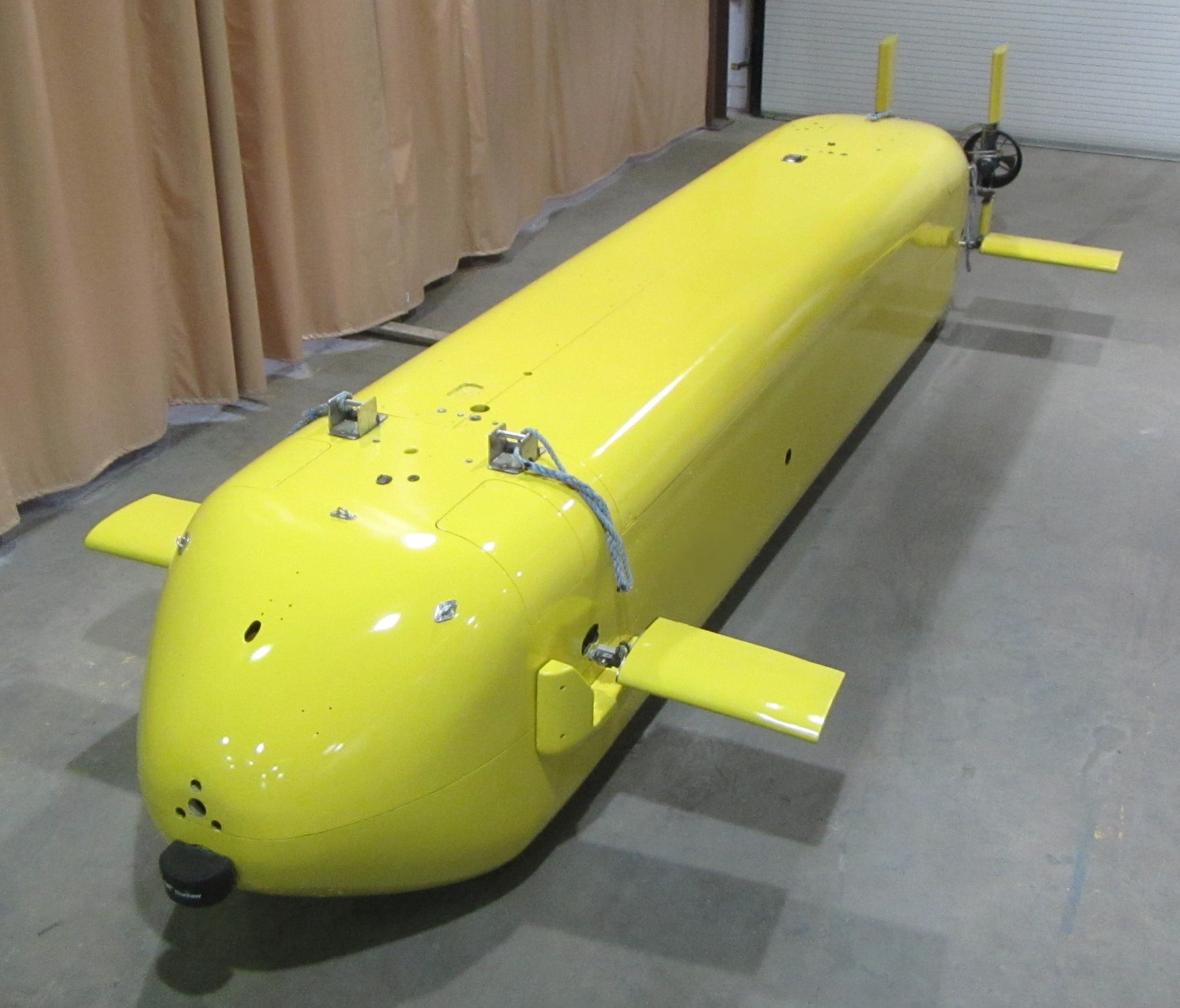The workhorse of the military's undersea drone inventory is an autonomous device 8 feet long and 12.5 inches in diameter. It's good up to depths of about 600 meters. As mine-seekers, these machines have proven their stripes.
But the next generation is going to be something else entirely: more than 25 feet long, 48 inches in diameter and able to travel autonomously for hundreds of miles.
"We would like to build a vehicle that could go 30 to 60 days in mission endurance, with power to go 1,000 miles," said Frank Herr, head of ocean battle sensing at the Office of Naval Research. "It will have the autonomy to be able to find its way to do a naval mission without reporting home constantly."
An industry day last fall for the Large Displacement Unmanned Underwater Vehicle Innovative Naval Prototype, or LDUUV INP, drew more than 265 representatives from 138 large and small companies, the Navy reported.
UUVs have been a topic of interest lately, catapulted into the news in December when China scooped up, and subsequently returned, a U.S. drone in the South China Sea. U.S. officials say the drone was conducting ocean research: Military and scientific users may run UUVs to track currents, water temperature and salinity, among other factors.
More common is the use of UUVs for anti-mine measures. With high-resolution imaging sonar, unamanned vehicles can spot underwater mines and identify them with some accuracy. "You can look at shadows and get quite a bit of structural information, which can be used in combination with looks from different directions in order to classify what kind of mine this might be," Herr said.
U.S. Army engineers have played a role in support of that effort. In mid-2016, the U.S. Army Aviation and Missile Research, Development and Engineering Center’s Prototype Integration Facility developed a new containment system to protect and support the MK18 Mod 2 Underwater Unmanned Vehicle, Navy’s primary mine-sweeping UUV.
"This Army and Navy business arrangement has allowed Navy to rapidly develop and field real capability into the hands of the explosive ordnance disposal war fighter," Rear Adm. T.J. Kearney said at the time.
The forthcoming large UUVs should be able to do all that and more, and at great distances.
Drone must '
repair itself'
To do that, researchers first need to work out what kind of power source they might be able to incorporate. They need one that can run reliably and safely over days and weeks without human intervention.
Right now they are leaning toward the tried and true, experimenting with the same fuel cells used for decades in automobiles. In 2016, researchers evaluated a prototype powered by a General Motors fuel cell, running experiments in pools at the Naval Surface Warfare Center division in Carderock, Maryland.

First publicly released photo of ONR's Large Displacement UUV. The drone's technologies will provide enhanced capabilities in endurance, energy and autonomy.
Photo Credit: Office of Naval Research
"The collaboration with the Navy leveraged what we learned in amassing more than 3 million miles of real-world experience," said Charlie Freese, executive director of General Motors' global fuel cell activities, in a news release.
It’s that long experience that makes GM a promising partner. "We want something reliable, we made that a major priority, so we chose General Motors because they were leveraging the commercial version of their technology," Herr said.
Researchers also are looking at ways to enhance the UUV’s autonomous capabilities. In one recent award, ONR inked a $29.8 million deal with Metron under which that company will develop machine intelligence solutions to enable future UUVs to act with greater independence.
"These systems need to operate near [nautical] features, in complex areas, in conjunction with other vehicles. One vehicle would have to know how to operate in the presence of another vehicle. It will need to watch itself doing business, knowing how to reroute data if there is a fault, for example," Herr said. "If we are not going to be able to repair this in the course of a mission, it will need to repair itself and reroute itself."
With power to go to the distance and intelligence to stay in action, the large UUV could support a range of sensors in support of diverse missions yet to be determined.
"It doesn’t do us any good to speculate because so much will depend on the advances in the autonomy algorithms," Herr said. "But we know in general that a platform of this type can augment naval platform, removing sailors from missions that are very dangerous."
Presently in the prototype phase, the new large UUVs could be fielded within two years, Herr said.








